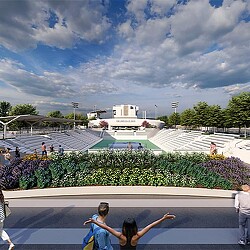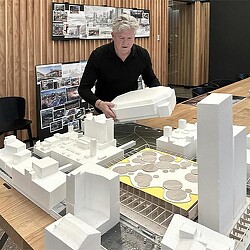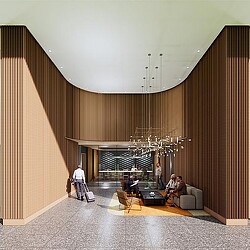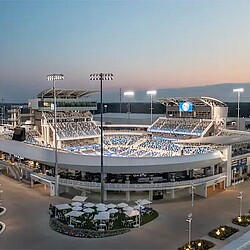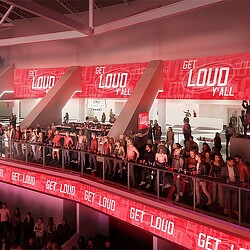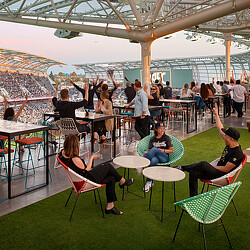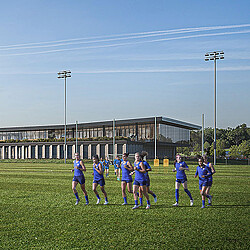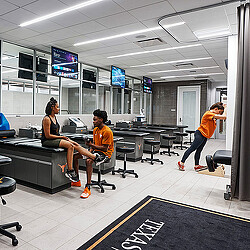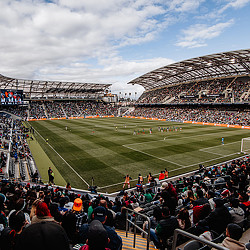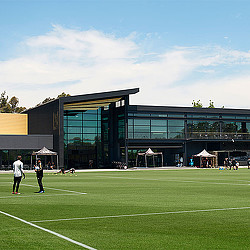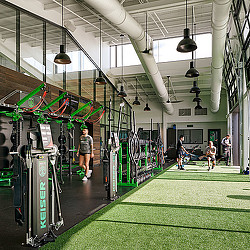The Power of Clean Air in Sports-Centered Design
In arenas, training centers, and stadiums, air quality is not just a comfort factor — it’s a competitive edge, affecting athletes’ ability to train, compete, and recover.
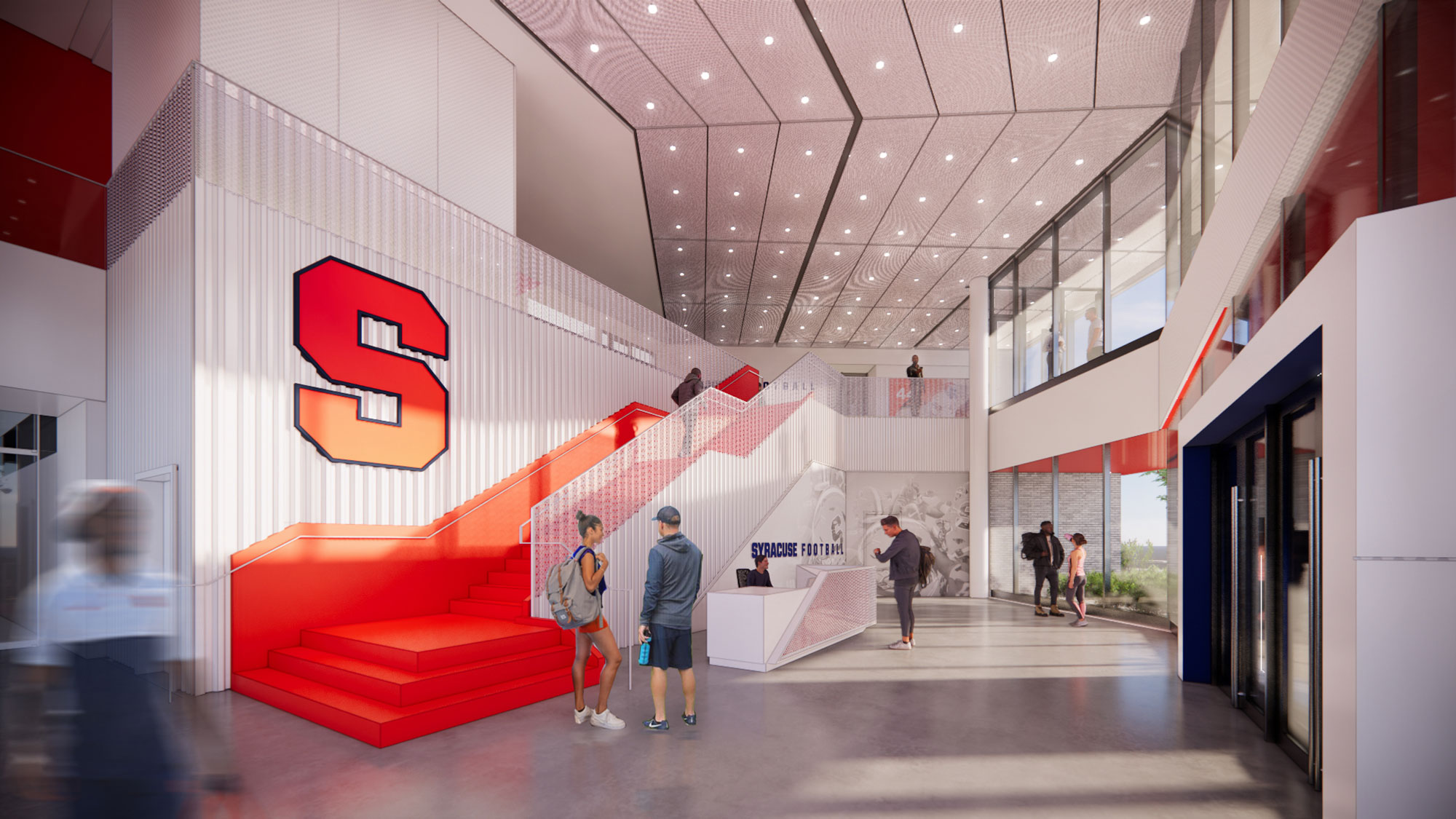
There’s nothing more essential — or more taken for granted — than air. It’s the invisible asset that sustains all life on our planet, from fueling our lungs to powering photosynthesis in plants. And yet, as we face growing concerns around climate change and pollution, the quality of the air we breathe is becoming one of the most pressing challenges of our time — especially in the built environment.
Nowhere is this more critical than in the world of sports. In arenas, training centers, and stadiums, air quality is not just a comfort factor — it’s a competitive edge, a community responsibility, and a key determinant of health and performance. Poor air quality can impair lung function, increase fatigue, and reduce muscle oxygenation, directly affecting athletes’ ability to train, compete, and recover. For fans and staff, it impacts everything from comfort to safety.
Air quality plays a central role in sports facility design — from optimizing ventilation systems to minimizing pollutants — and forward-thinking strategies are essential for supporting elite performance and environmental well-being. In the game of design, nothing matters more than the air we share.
Why Air Quality Is a Game-Changer in Sports Design
Air quality isn’t just an environmental concern — it’s a human performance issue. The Air Quality Index (AQI) is used to measure pollution levels and their potential health risks. The higher the AQI, the greater the danger to both physical and cognitive health. For athletes and fans alike, the implications are serious and increasingly impossible to ignore.
Athletes, especially endurance athletes, are more vulnerable to poor air quality. During physical activity, the body demands more oxygen, leading to deeper and faster breathing — and a higher intake of pollutants. This can cause respiratory irritation, slower reaction times, and prolonged recovery periods. Athletes with pre-existing conditions are even more at risk, and high AQI levels can lead to delayed or canceled events.
Spectators are impacted too. Poor air can cause discomfort, fatigue, and symptoms that reduce enjoyment of the experience. The risks are even greater for sensitive populations like children, seniors, and people with respiratory issues. When the air isn’t clean, the excitement of live sports diminishes.
That’s why clean air is now a critical design priority at facilities across the U.S. These facilities feature smart ventilation, advanced filtration, and real-time air monitoring — setting a new standard for health and performance.
At Syracuse University’s Athletics Lally Complex, clean air strategies start from the outside in. Natural greenery supports exterior air quality, which is drawn indoors through a negatively pressured 100% outside air system. This controlled approach is uncommon in sports facilities, positioning the Lally Complex as a model for future-ready design.
Nature-Integrated Design: The Invisible Advantage
Incorporating natural systems into sports environments — such as plants, daylight, and airflow — not only helps purify the air but also significantly enhances human health and wellness. These biophilic strategies are foundational to projects where daylight and smart airflow systems work in tandem to support the well-being of the workforce and training teams.
Access to clean air through natural systems has measurable benefits: it boosts mental clarity, lowers stress, and supports faster recovery — crucial factors in athlete performance and rehabilitation.
These benefits extend throughout the athlete’s development cycle, supporting a holistic framework: Education → Conditioning → Recovery → Strengthening. A healthier environment means more effective learning, stronger training results, and quicker healing from injuries.
Syracuse’s Lally Complex also supports these goals with hydrotherapy pools, monumental staircases that promote movement, and thoughtful daylighting strategies. Every square foot of this facility is designed around wellness and high performance.
Designing to Reduce Emissions and Improve Air
Designing for clean air starts well before the building is occupied. We’re currently designing a space at a Big Ten school that includes comprehensive indoor air quality assessments, ensuring that every phase from construction to operation promotes occupant health and well-being.
From a broader architectural lens, designing a breathable sports environment also involves reducing emissions and sequestering carbon. Strategies include:
- Green roofs and trees that act as carbon sinks.
- Clean energy systems that power the facilities sustainably.
- Transit-oriented site planning to reduce reliance on vehicles.
At the Lally Complex, this commitment is evident through low-carbon materials, bicycle-friendly infrastructure, and integration with university transit. Even the exterior lighting was carefully selected to reduce light pollution and support circadian rhythms — further demonstrating how environmental and human health are interconnected.
Smart ventilation and filtration systems, like those employed across all three featured projects, enhance these strategies by minimizing indoor pollutants. Each project also used low- or zero-VOC interior materials, reinforcing a commitment to occupant health while reducing long-term emissions from construction.
Clean Air as a Shared Value
At the intersection of athletics, community, and design lies a powerful opportunity to redefine what performance environments can be. By prioritizing air quality, we not only elevate athletes’ physical potential but also enhance fans’ comfort and safety, staff’s well-being, and the health of the environment.
In a time when air pollution and climate change threaten urban livability, designing healthier spaces is an urgent and shared responsibility. Clean air connects us — competitors and spectators, designers and communities. And in the world of sports, where every advantage counts, it might just be the most powerful edge of all.
For media inquiries, email .

